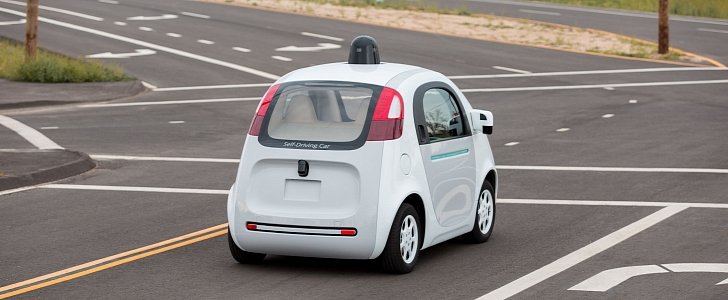If you think about it, the difference between a driverless car that can recharge by itself and one that can’t isn’t that relevant in terms of actual effort required from the human side, but it does make a ton of difference image-wise.
It’s like having a smart robot versus having a needy one. And nobody wants a needy robot - we’ve got plenty of living beings to take care of, ourselves included. You want a machine to be able to fend for itself, especially since all it ever needs is nothing more than mere electric current to replenish its batteries.
Wireless charging will undoubtedly become common practice in the shortest time possible, and some documents filed with the U.S. Federal Communications Commission suggest that the tech giant is on its way to develop the systems necessary to offer its driverless cars just that.
“Develop” might not be the best way to describe what’s happening, as Google is employing the services of two other companies, Hevo Power from New York City and Momentum Dynamics from Philadelphia.
Both companies use the same principle to send electric energy through the air, relying on a transmitter embedded in the ground and a receiver mounted on the underside of an electric vehicle.
The principle is called resonant magnetic induction and functions by creating an oscillating magnetic field with the help of an alternating current passing through a tuned electrical circuit. In turn, that magnetic field induces another alternating current in the circuit mounted on the vehicle, enabling it to recharge the onboard battery.
Google is now experimenting with chargers from Momentum Dynamics and probably plans to have them ready the moment its driverless car will become available to the public.
This wireless charging thing isn’t just convenient, it can also change the way we see and use electric cars. Depending on the solutions found, it’s not impossible to imagine that, in the future, EVs might be able to receive their power on the go, thus giving them virtually unlimited range, as long as the needed infrastructure is in place.
Spectrum IEEE says that Google refused to comment at the moment, and so did the other two companies involved in the report, Hevo Power and Momentum Dynamics, which means we have no idea how far along Google is with its tests. However, for this method to become widespread, there’s a hurdle that needs to be cleared: right now, Induction charging isn’t a very energy-efficient process with some of the power getting wasted. Convenience isn’t important enough to put a dent into the EV’s green credentials, is it?
Wireless charging will undoubtedly become common practice in the shortest time possible, and some documents filed with the U.S. Federal Communications Commission suggest that the tech giant is on its way to develop the systems necessary to offer its driverless cars just that.
“Develop” might not be the best way to describe what’s happening, as Google is employing the services of two other companies, Hevo Power from New York City and Momentum Dynamics from Philadelphia.
Both companies use the same principle to send electric energy through the air, relying on a transmitter embedded in the ground and a receiver mounted on the underside of an electric vehicle.
The principle is called resonant magnetic induction and functions by creating an oscillating magnetic field with the help of an alternating current passing through a tuned electrical circuit. In turn, that magnetic field induces another alternating current in the circuit mounted on the vehicle, enabling it to recharge the onboard battery.
Google is now experimenting with chargers from Momentum Dynamics and probably plans to have them ready the moment its driverless car will become available to the public.
This wireless charging thing isn’t just convenient, it can also change the way we see and use electric cars. Depending on the solutions found, it’s not impossible to imagine that, in the future, EVs might be able to receive their power on the go, thus giving them virtually unlimited range, as long as the needed infrastructure is in place.
Spectrum IEEE says that Google refused to comment at the moment, and so did the other two companies involved in the report, Hevo Power and Momentum Dynamics, which means we have no idea how far along Google is with its tests. However, for this method to become widespread, there’s a hurdle that needs to be cleared: right now, Induction charging isn’t a very energy-efficient process with some of the power getting wasted. Convenience isn’t important enough to put a dent into the EV’s green credentials, is it?

